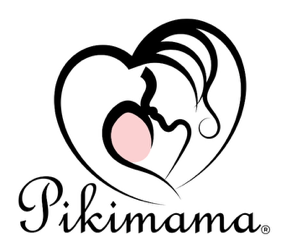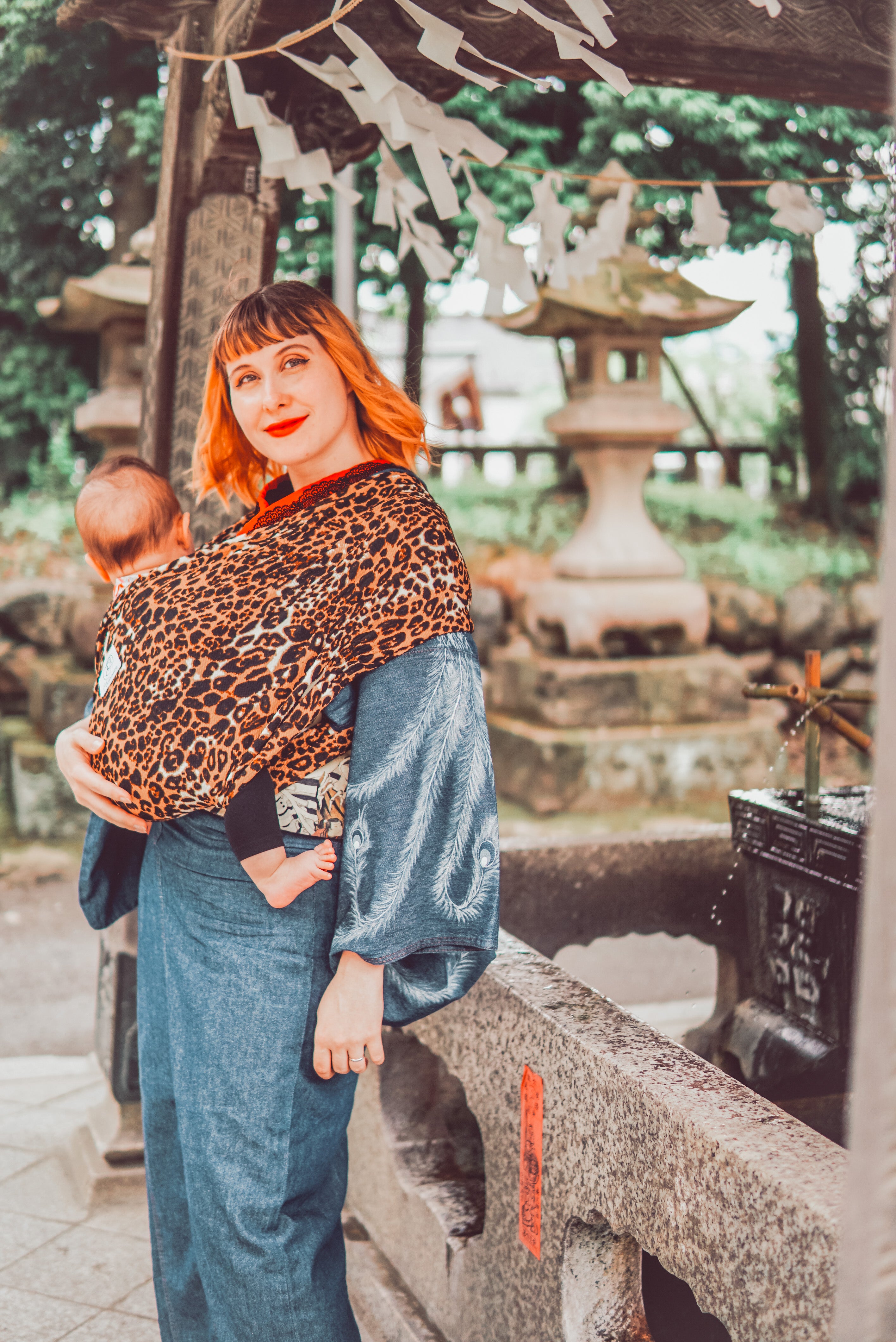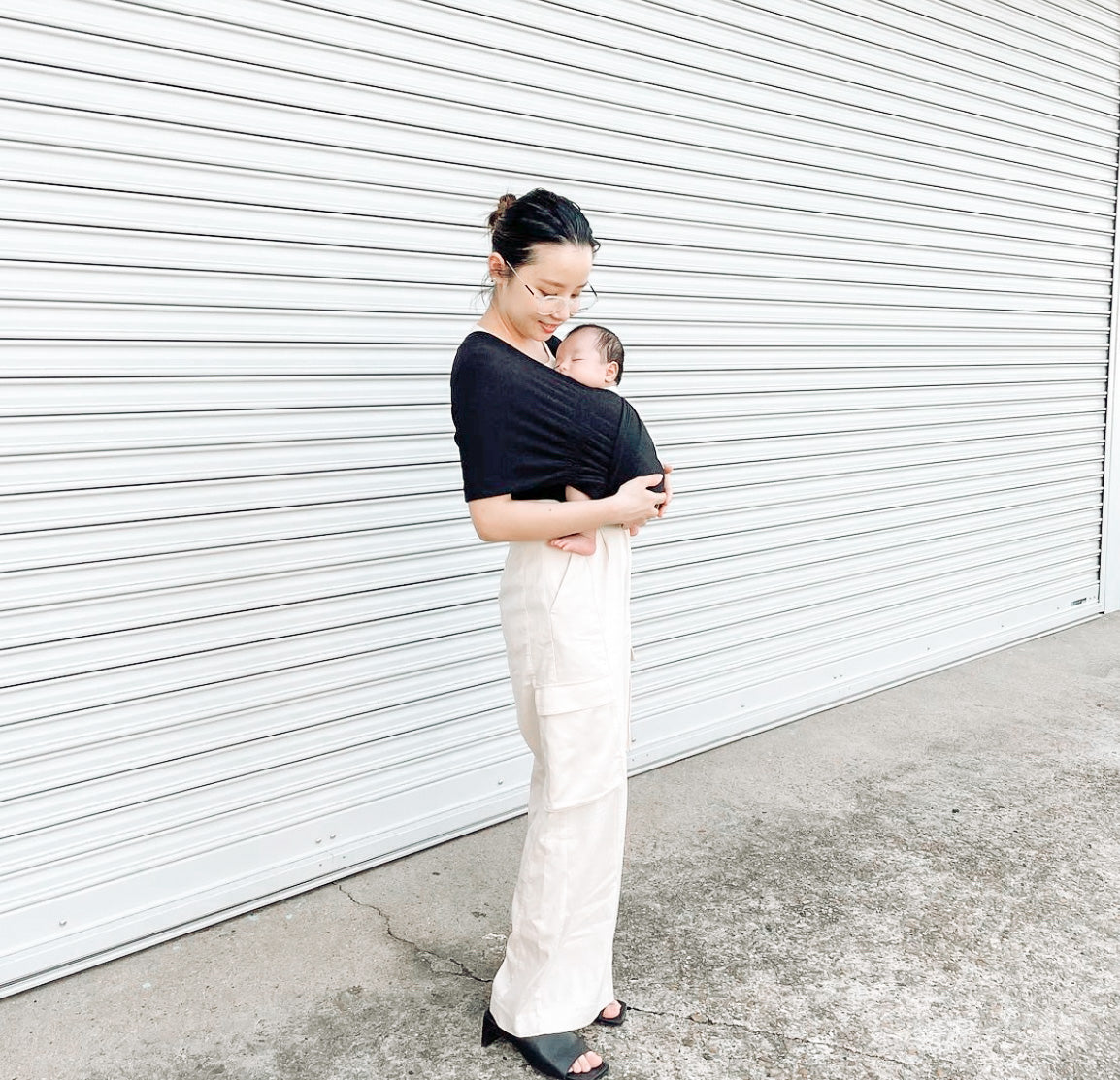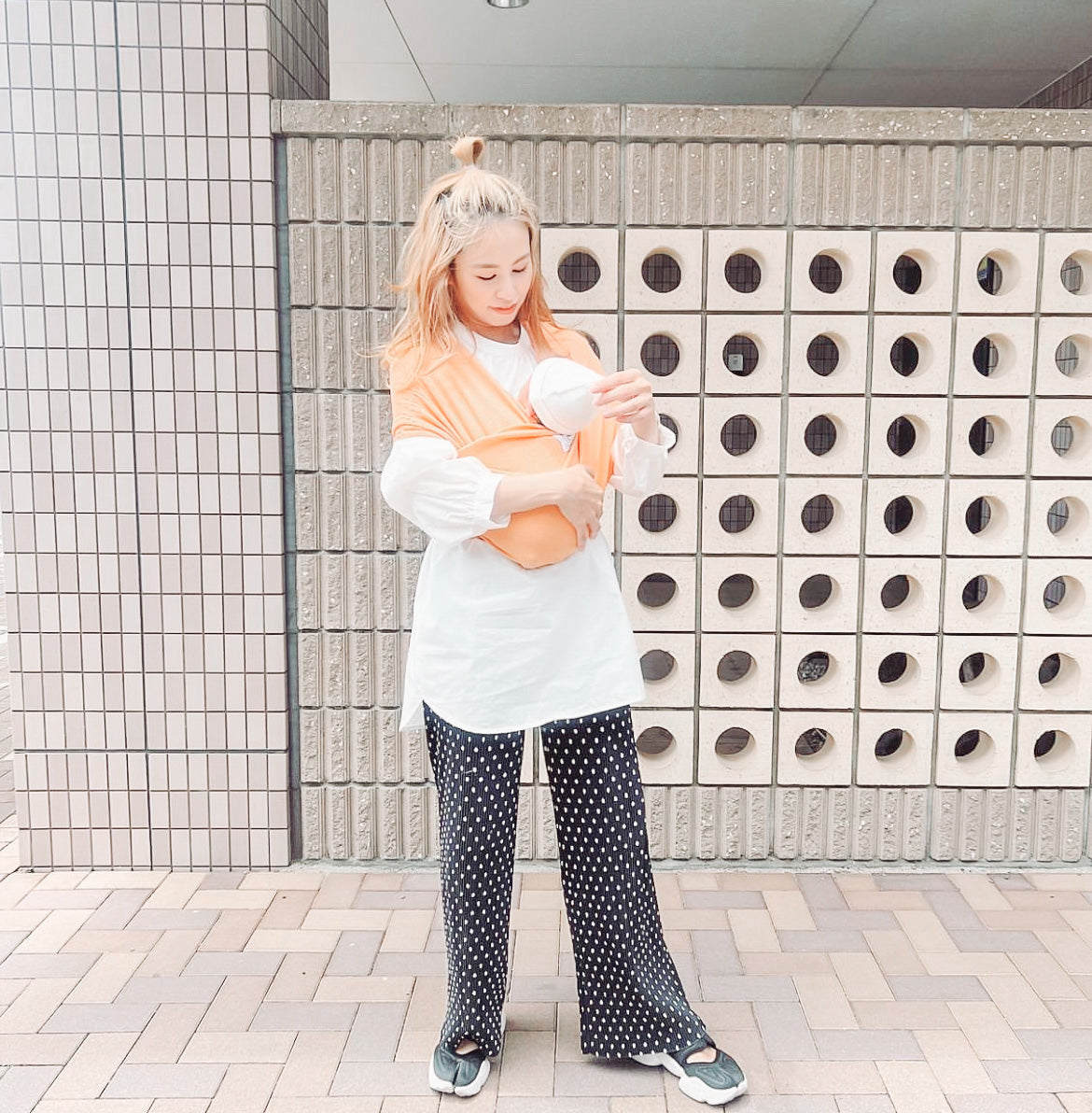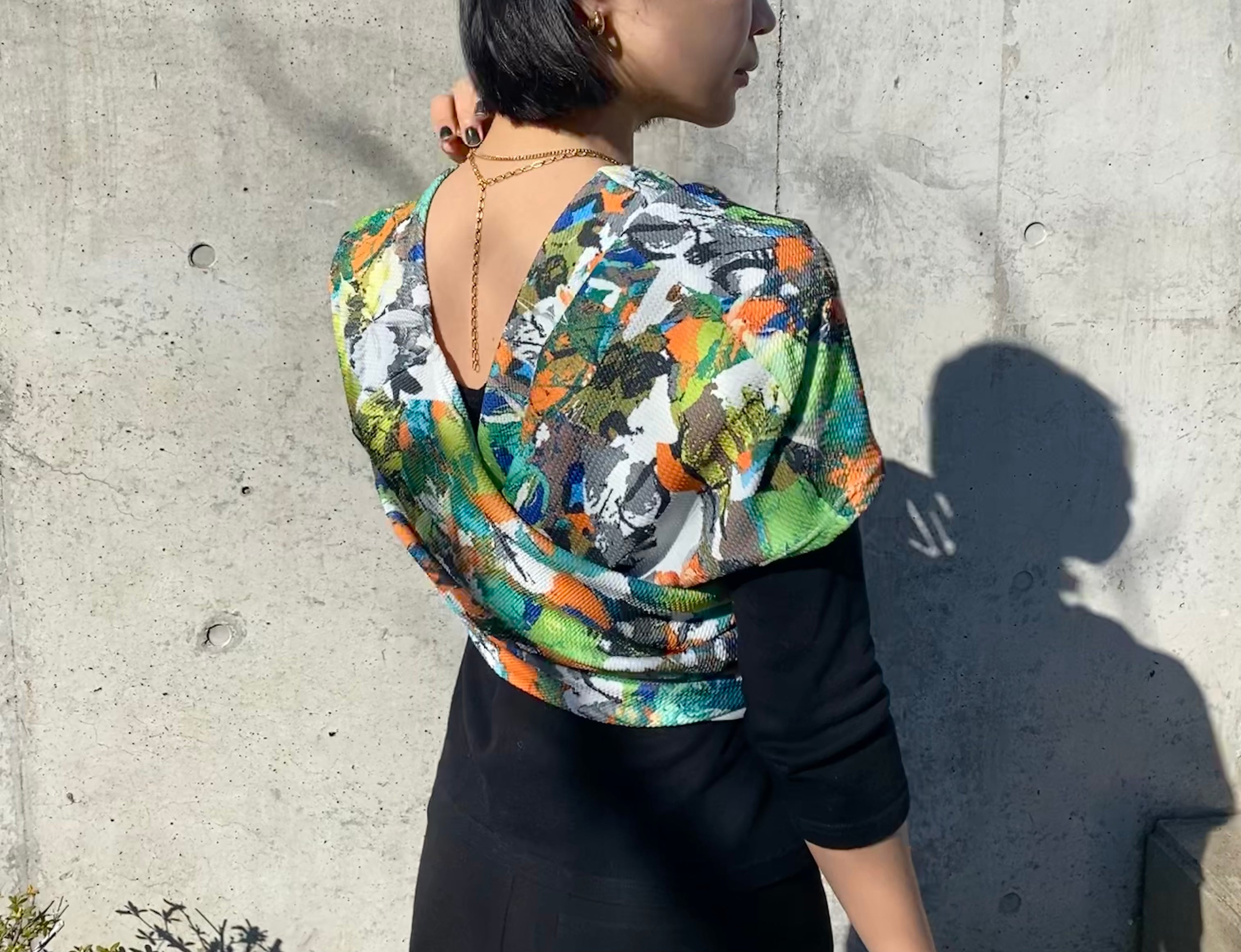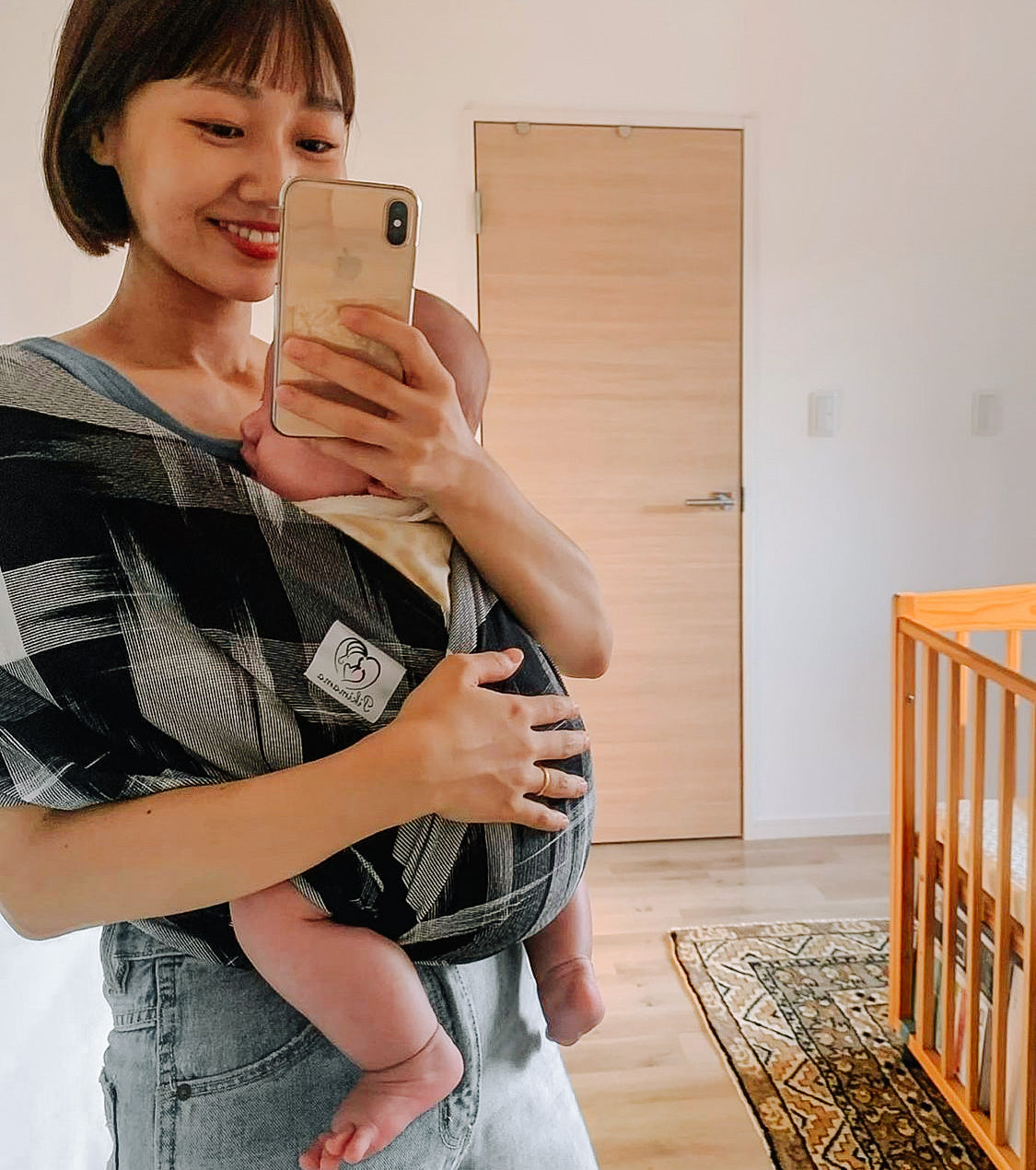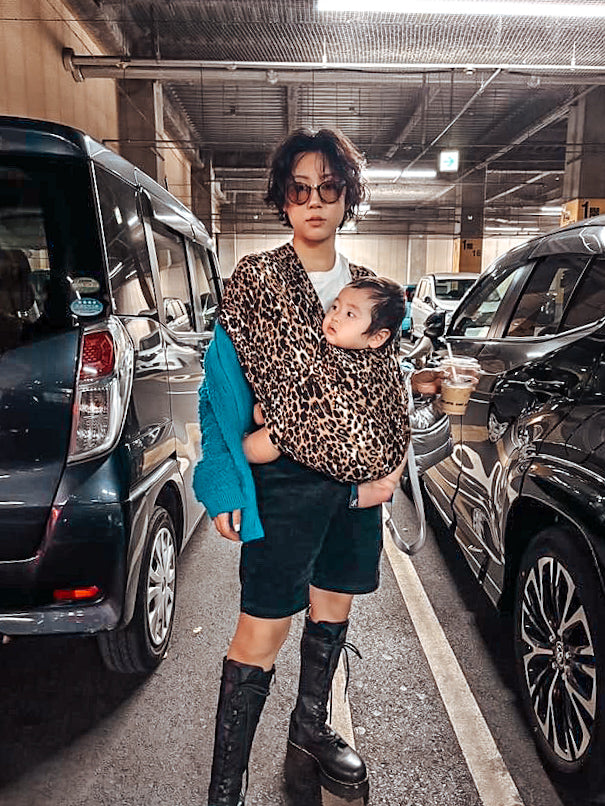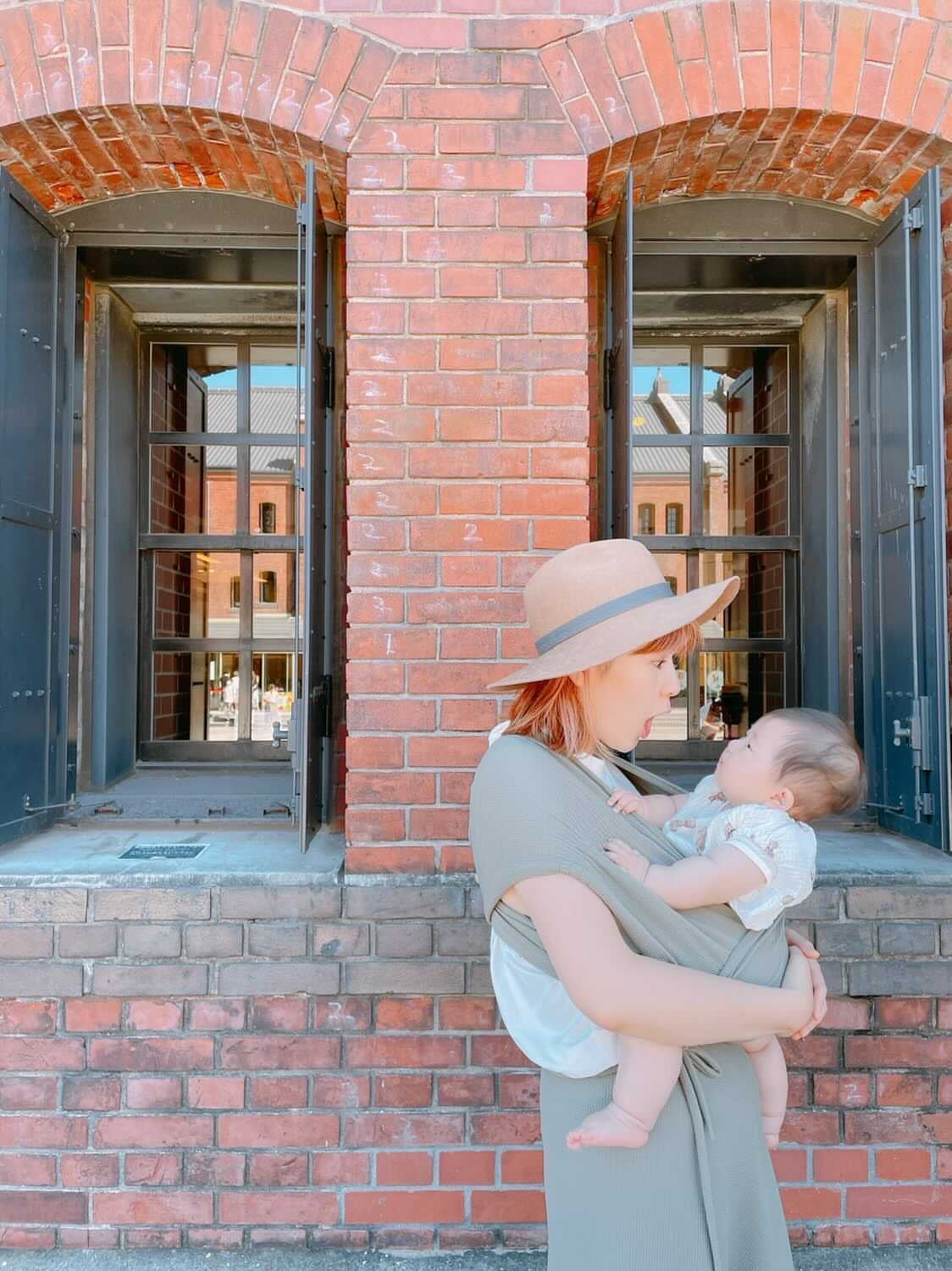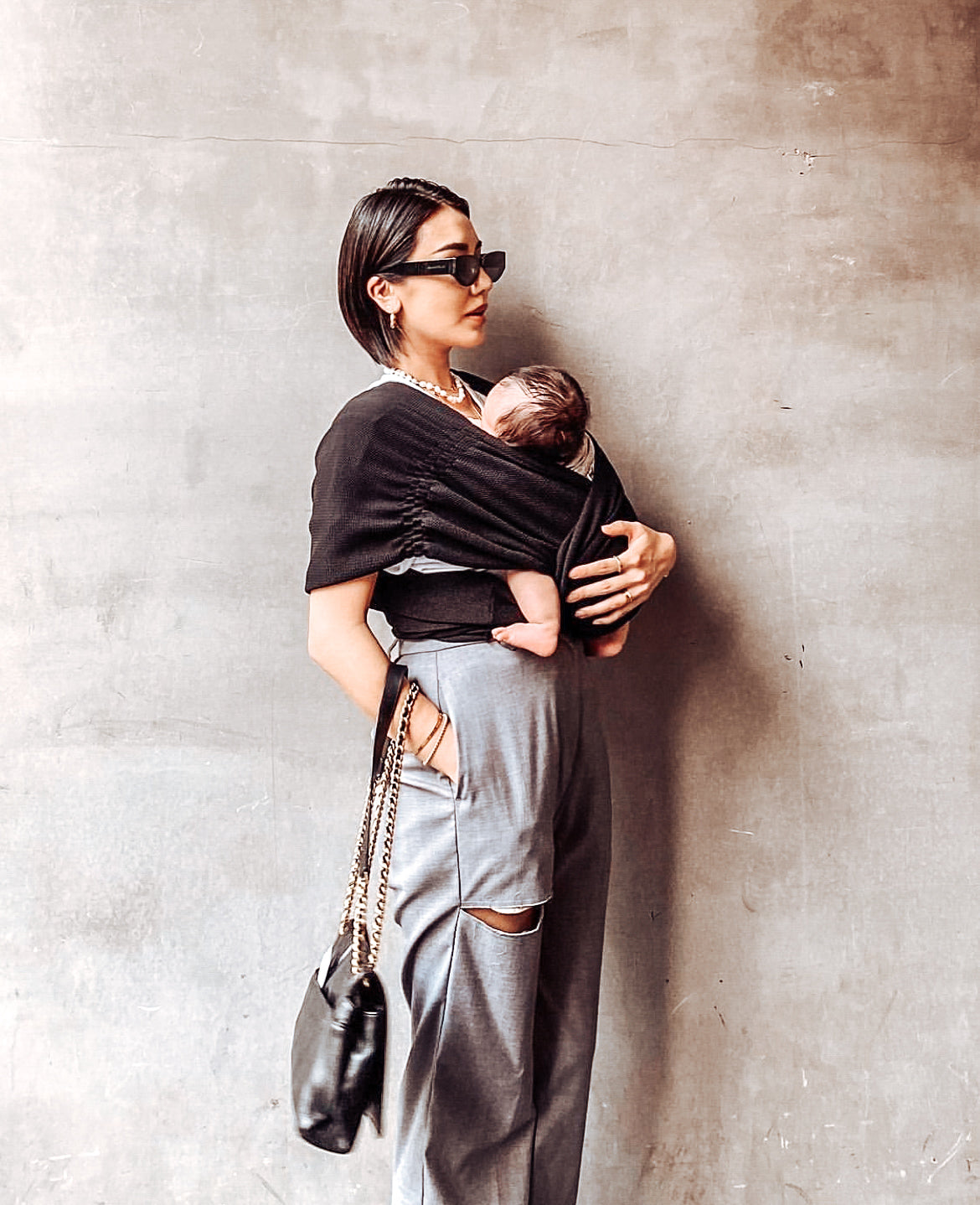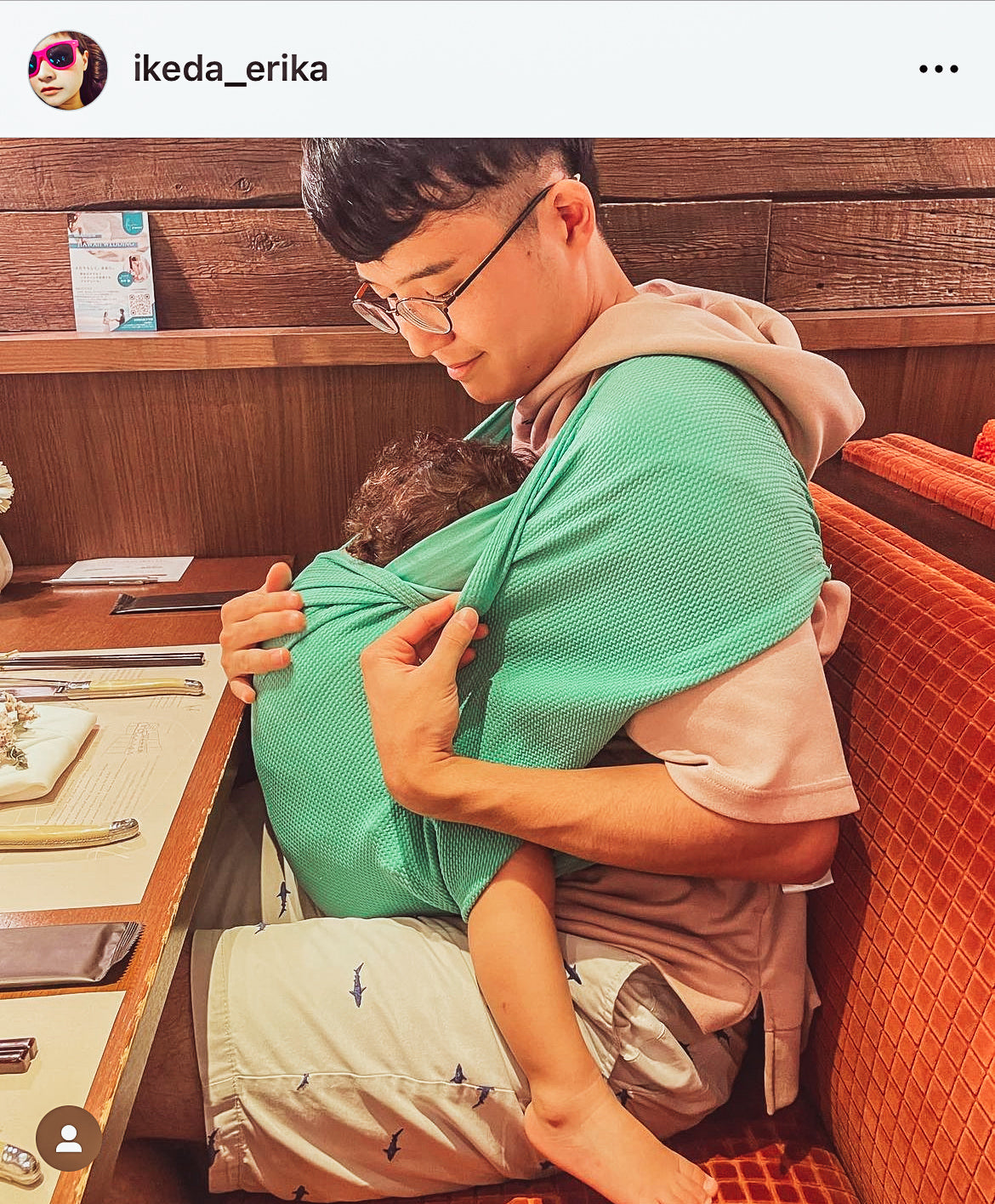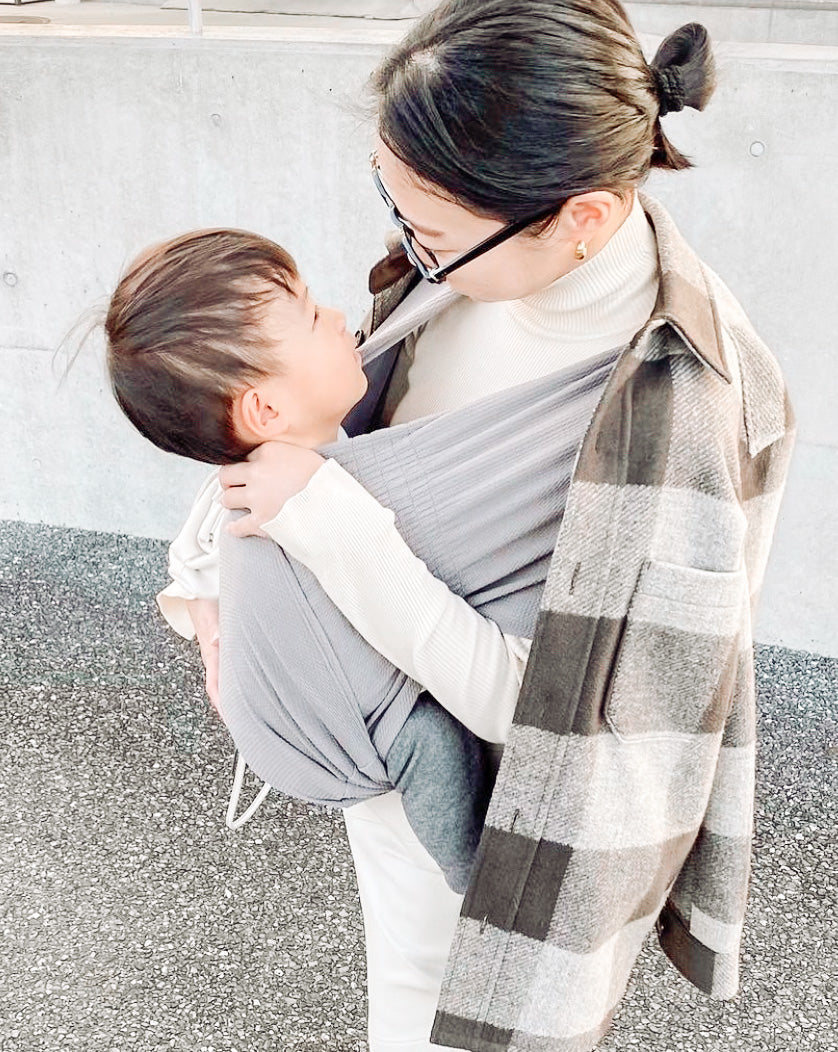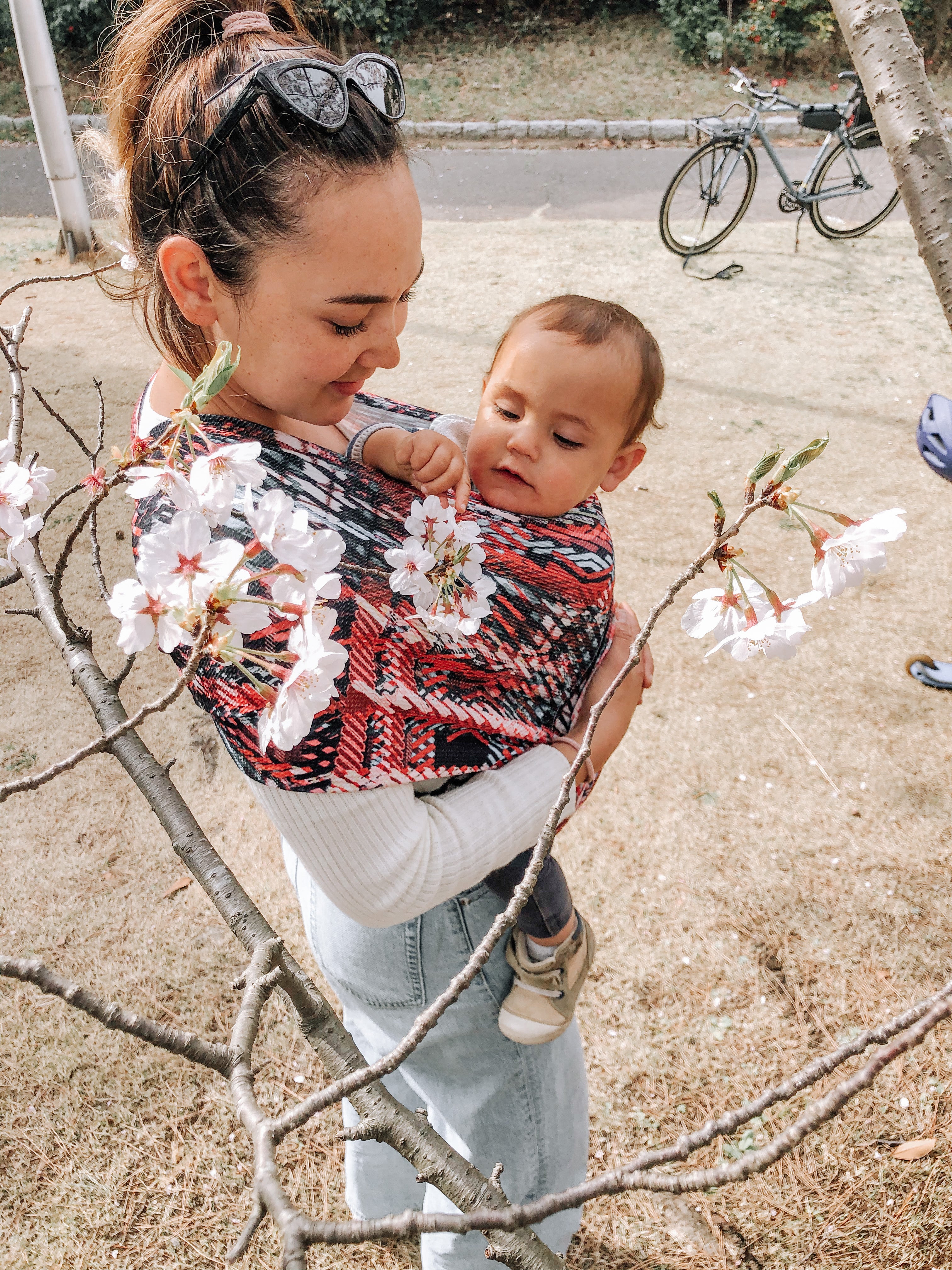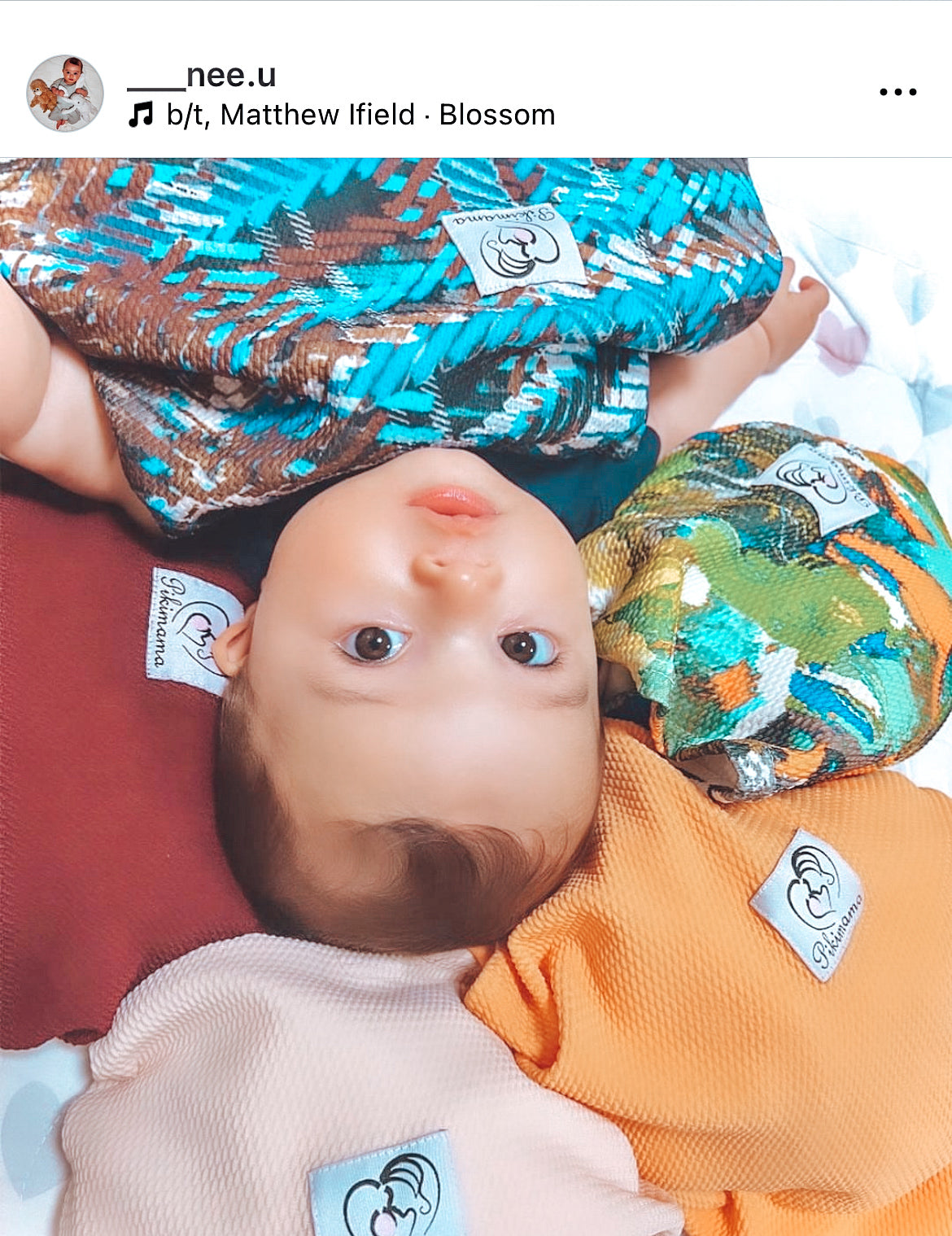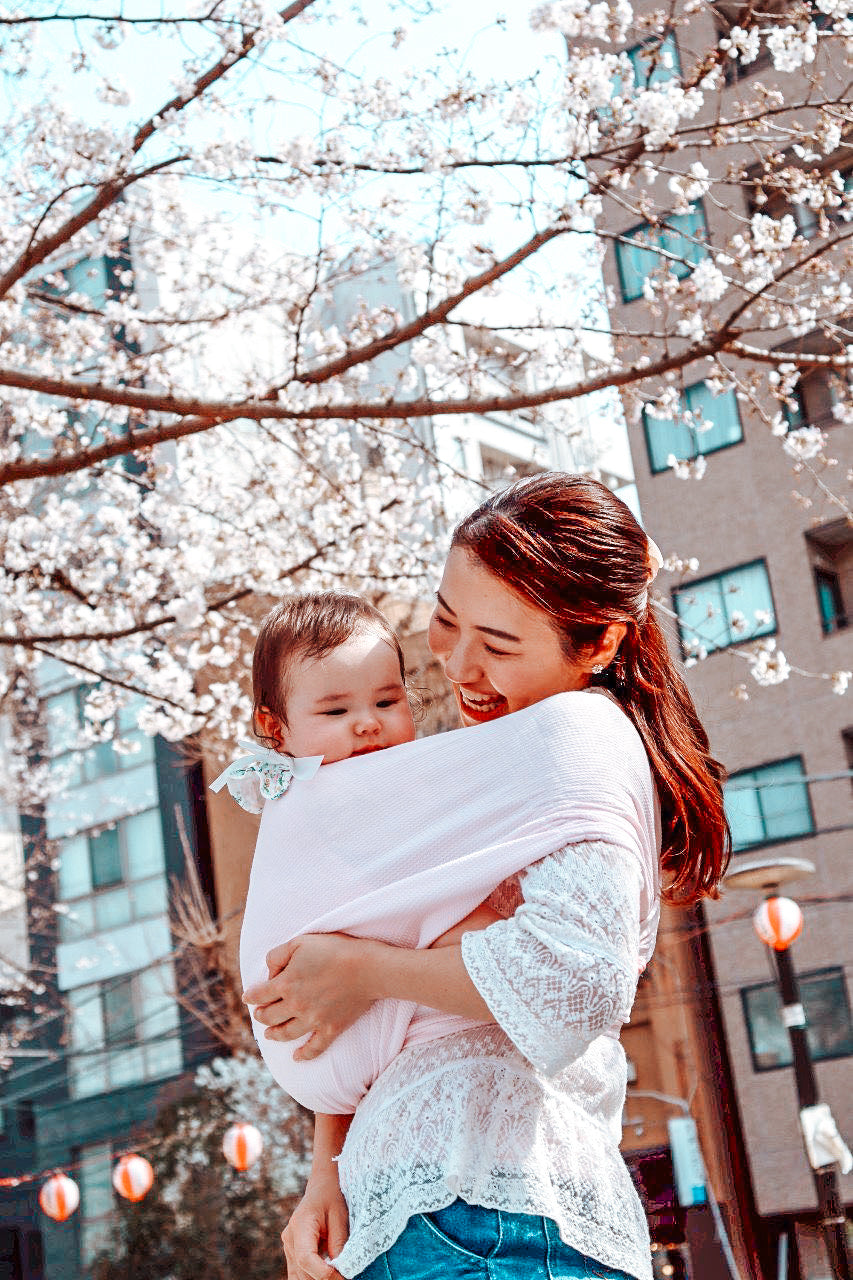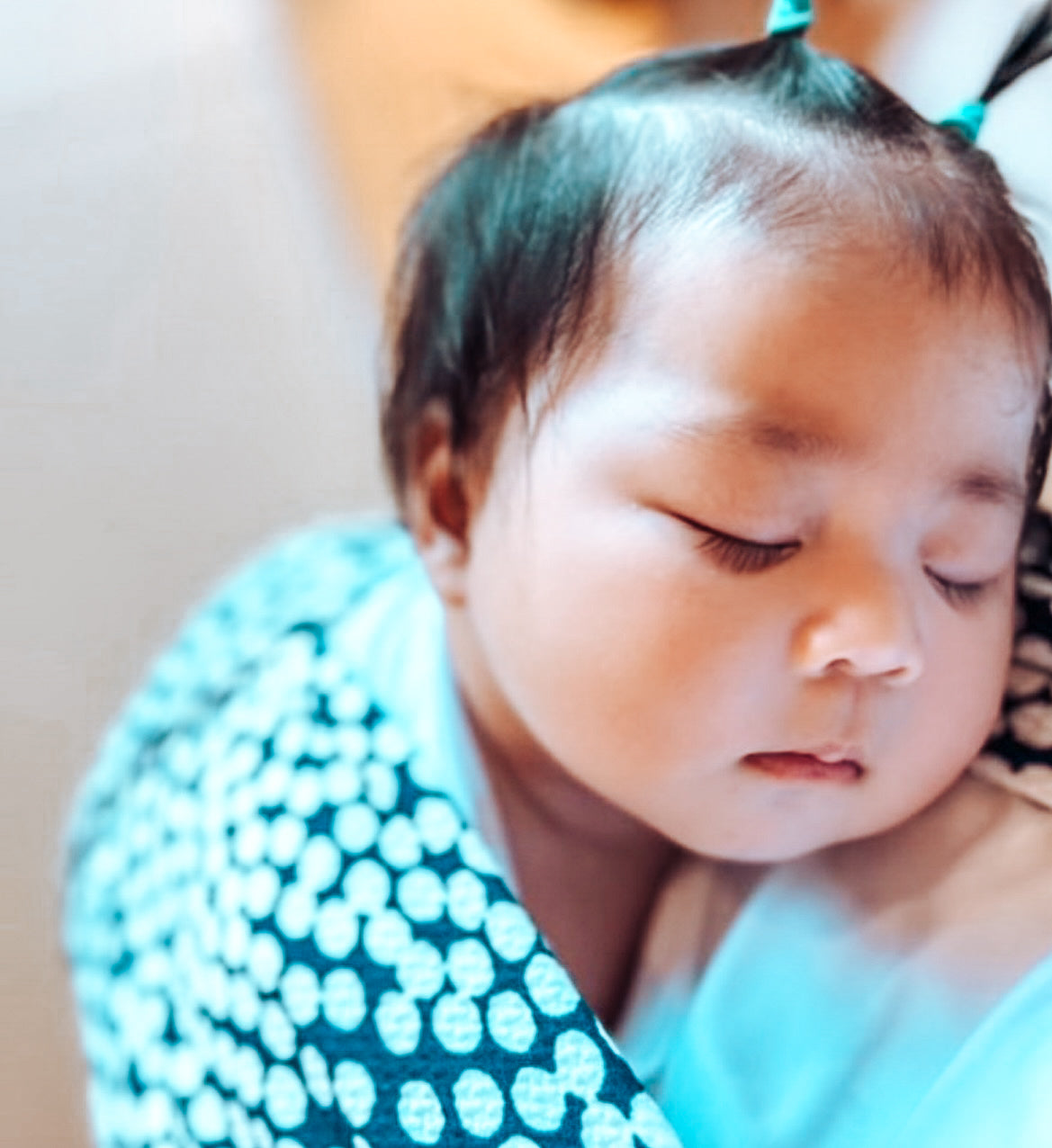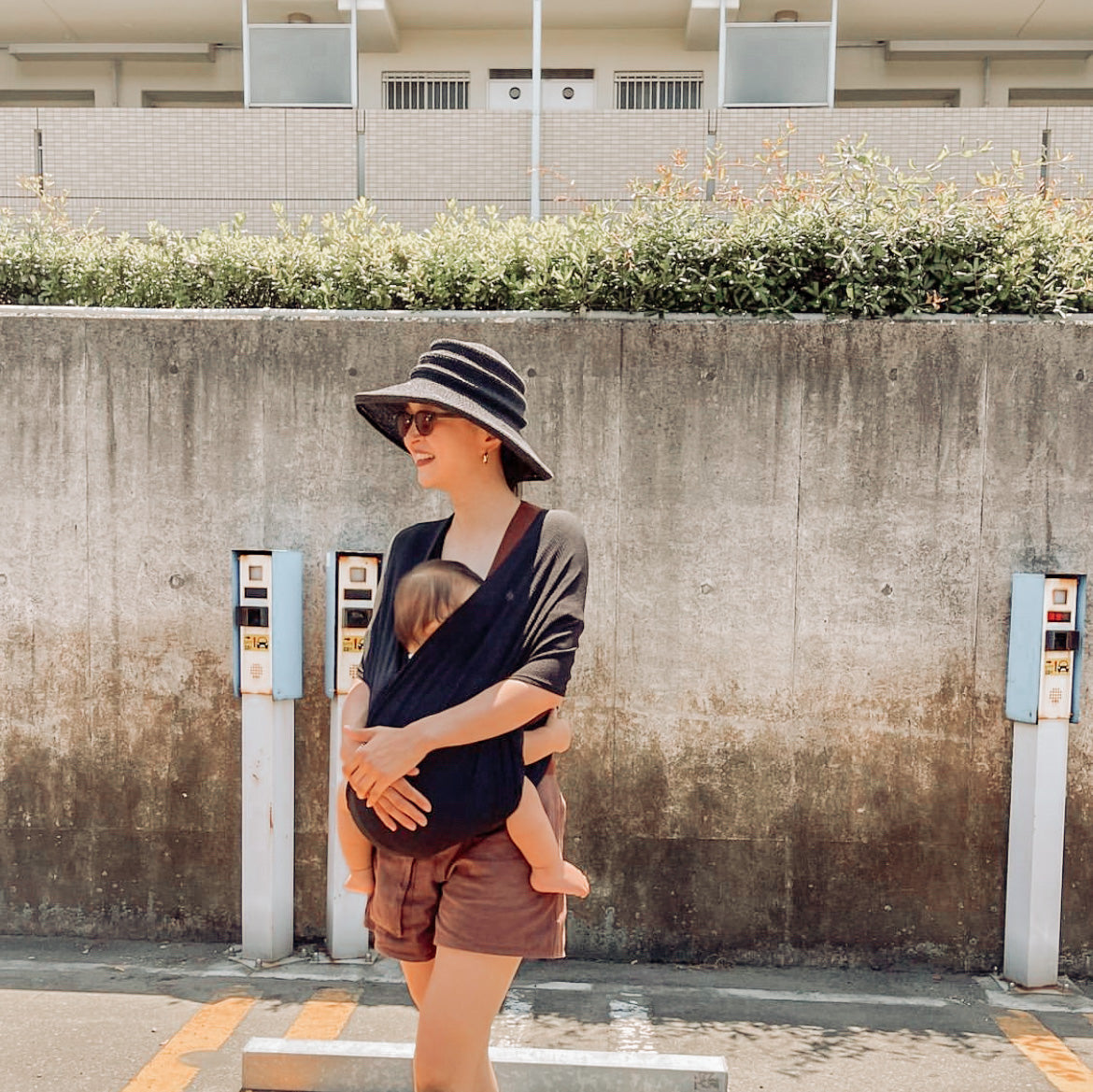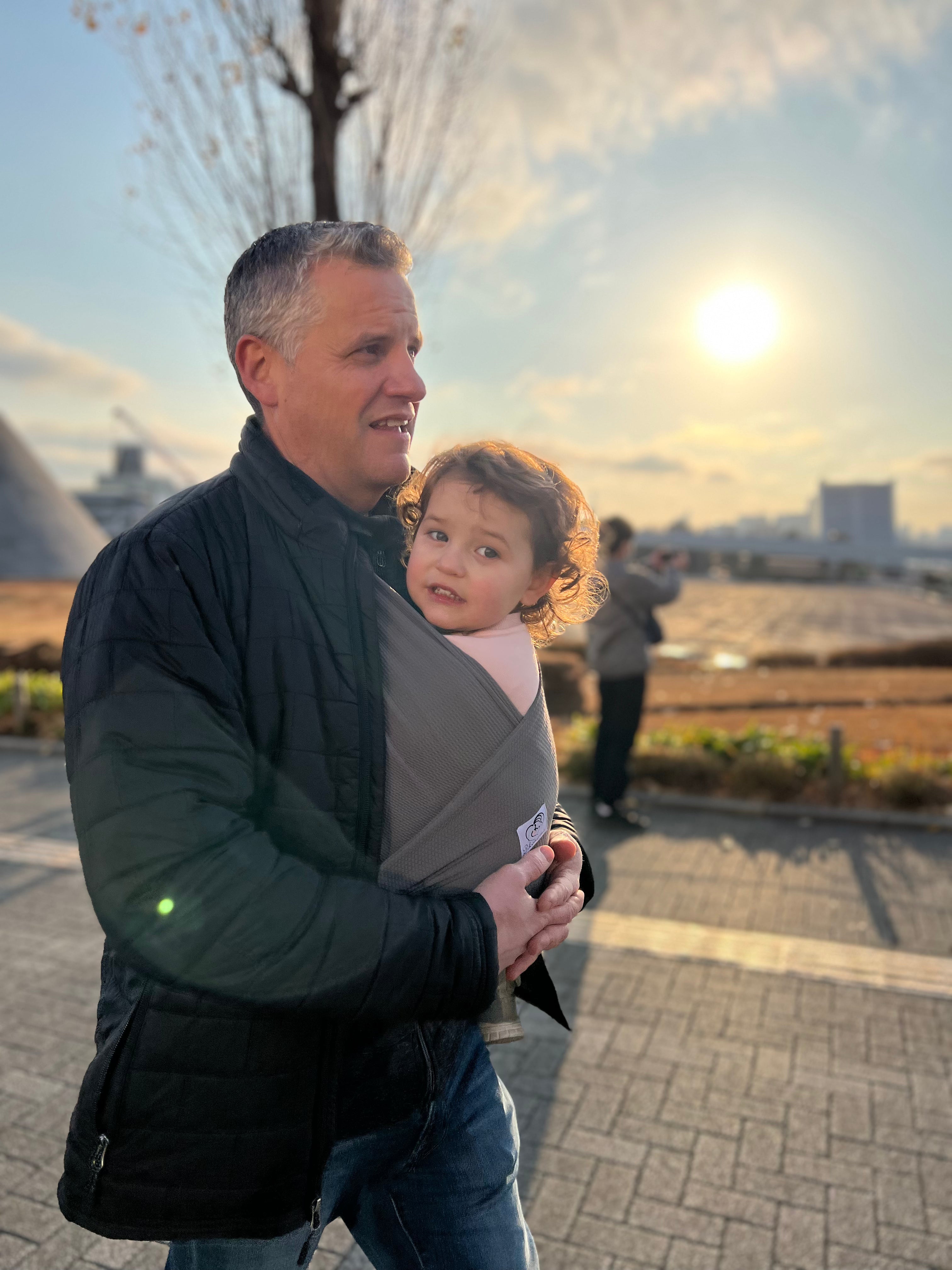セーフティチェック
Baby Wearing Safety Check
T.I.C.K.S
TIGHT –
slings and carriers should be tight enough to hug your baby close to you as this will be most comfortable for you both. Any slack/loose fabric will allow your baby to slump down in the carrier which can hinder their breathing and pull on your back.
IN VIEW AT ALL TIMES –
you should always be able to see your baby’s face by simply glancing down. The fabric of a sling or carrier should not close around them so you have to open it to check on them. In a cradle position your baby should face upwards not be turned in towards your body.
CLOSE ENOUGH TO KISS –
your baby’s head should be as close to your chin as is comfortable. By tipping your head forward you should be able to kiss your baby on the head or forehead.
KEEP CHIN OFF THE CHEST –
a baby should never be curled so their chin is forced onto their chest as this can restrict their breathing. Ensure there is always a space of at least a finger width under your baby’s chin.
SUPPORTED BACK –
in an upright carry a baby should be held comfortably close to the wearer so their back is supported in its natural position and their tummy and chest are against you. If a sling is too loose they can slump which can partially close their airway. (This can be tested by placing a hand on your baby’s back and pressing gently - they should not uncurl or move closer to you.) A baby in a cradle carry in a pouch or ring sling should be positioned carefully with their bottom in the deepest part so the sling does not fold them in half pressing their chin to their chest.
Carry Position
Upright Carry: Make sure that the baby's knee is higher than the baby's bottum
Side Carry: Make sure that the baby's head is higher than their legs
Sling position
- The gathered portion should be placed on the wearer's shoulders. This will allow the child's bottom to slip into the widest part of the fabric, increasing the safety and stability of the carrier.
- Make sure that the child's back and hips are in a secure position in the sling.
- In the cradle position (sideways carrying) of a newborn, be careful not to curl the child up so that his or her chin is attached to the chest.
- Make sure that the child's face is not close to the wearer.
- When carrying the child, the child should be in a position where the wearer can kiss the child's forehead.
- A support belt is essential for forward-facing carrying.
- Forward-facing swaddling should not be used for long periods of time to avoid stiffening of the hip joints. Also, a sleeping baby should always be turned back to the wearer. If the baby sleeps facing forward, the breathing opening may be blocked and suffocation may occur.
- The use of a support belt increases stability and safety.
Baby Wearing Position
Please do not hold baby in the following position
1. Baby's face is on the wearers chest

2. Baby is too low / You can't see the baby's face

3. Baby's face is buried in the sling

4. Baby's back is curled and the chin is attached to the chest

Precautions for use
⚠️ to prevent accidents always check the safety of your child while using this product.
Please read the instructions carefully before use. We are not responsible for accidents caused by improper use.
⚠️The safety of the child is the responsibility of the wearer.
- Newborns, nursing infants, and sleeping children should always make sure that their breathing passages are not obstructed.
- Use the sling based on the growth, not the age, of the child
- Make sure the child's chin is not attached to the chest when using the sling
- When using the sling, do not remove your hand until the child is in a secure position
- Always check the child's position when using the sling
- Support the child firmly with your hand if you lean forward or crouch during the movement
- Keep one hand free for manual support at all times.
- Be careful to adjust the temperature so that the child does not get too hot when in the sling.
- Please do not engage in dangerous activities while your child is in the sling, such as cooking, jogging, biking, sleeping, etc.
- Please read the enclosed instruction manual carefully for more detailed information before use.
- Please be sure to keep the instruction manual.
Usage scenarios
Pikimamaの愛着抱っこ育児動画
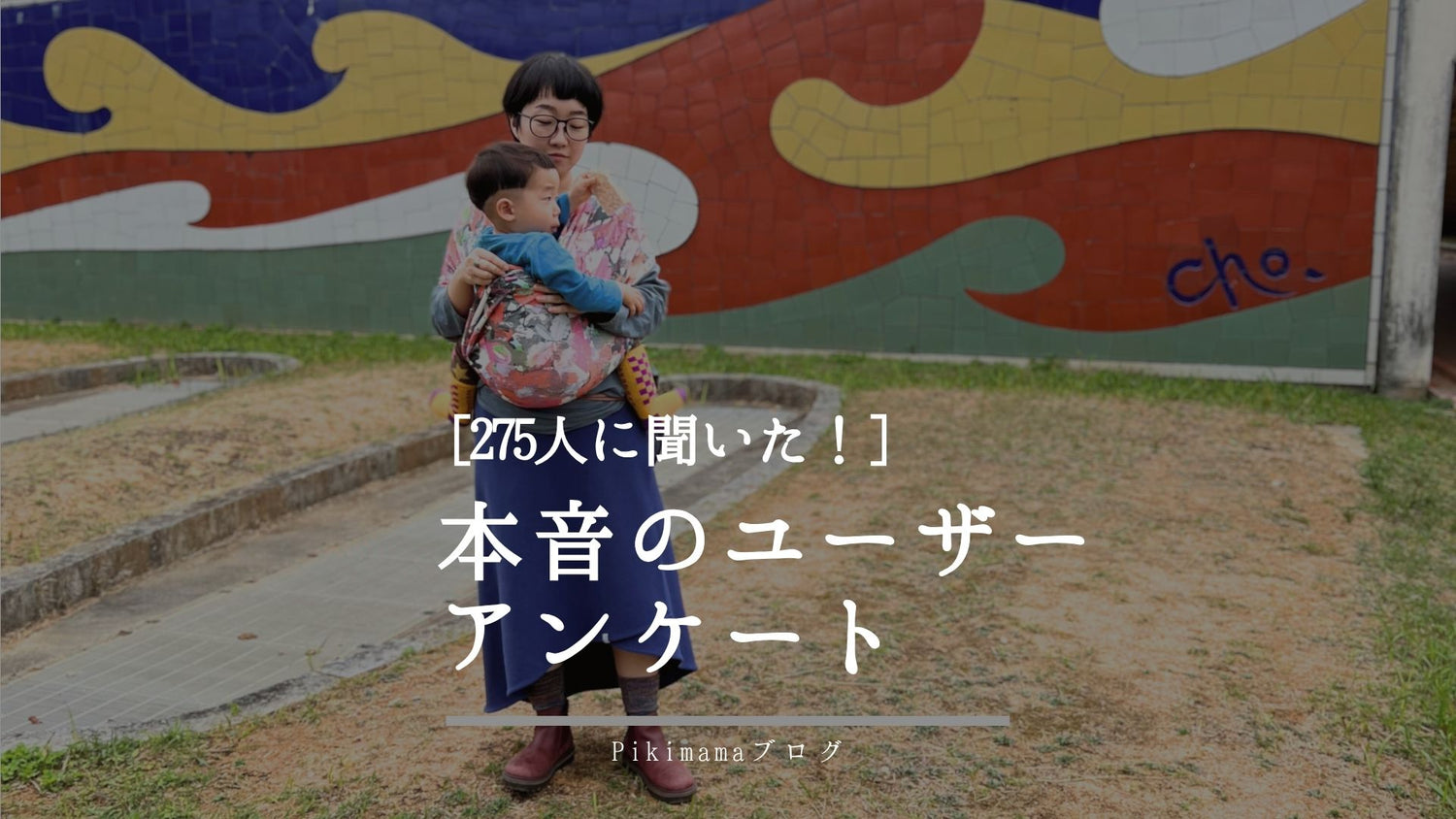
Pikimamaスリング利用者アンケートまとめ
Pikimama(ピキママ)スリングをご購入いただいたお客様からのアンケート結果をまとめました!いつもご愛顧いただきありがとうございます♡
購入を検討している方へのメッセージ
ご購入いただいたお客様から、アンケートを通してこれから購入を検討している方へのメッセージをいただきました♡
ピキママ最高でした♡モカMサイズ購入。使用してから1ヶ月ちょっとです。密着抱っこが好きなので、届いた時は少し大きいかな?と思いましたが、大きめだから主人と兼用することができました(笑)ということで、結果オーライっ!! 一枚布のベビーラップを2枚持っているので、ピキママ購入悩んでいましたが、楽に装着できるところに惹かれて思い切って購入!やっぱり楽でした♡ 『ベビーラップ持ってるからなぁ』と悩んでいる方の背中を押せたらと思いレビューしてます(^^) ピキママいいですよ♪ベビーラップ使用者で、その密着が好きな方はサイズ小さい方がいいのかも??ということで、本日Sサイズもポチりました(^^)♪届くのが楽しみです⭐︎
2ヶ月になる息子が6キロを超えて家での長時間抱っこが大変になってきたため購入しました。最初こそ装着に慣れるのに戸惑いましたが、回数を重ねるごとにコツを掴んで今ではすっかり慣れました。フィット感も最初はキツイな、大丈夫かな、と心配に感じましたが慣れた今ではちょうどいいです。息子もとても心地が良いようで、始めて使用した時からすぐにぐっすり寝てくれています。それまでは抱っこすると他に何も出来ないし、ご飯を食べるタイミングも難しい時がありましたが、ピキママスリングを使い始めてからは抱っこしながらご飯も食べられるし、メイクも出来るので本当に助かっています。人気ランキングの上位によく入っている抱っこ紐も持っていますが、そちらは家の中で付けるにはゴツいので使い分けています。ピキママスリングは装着したままソファなどに座っても背中や腰がゴワゴワしないので付けているママ自身も快適に過ごせます。最近は外出にもピキママスリングを使用することが増えてきています。みずたまを購入しましたが、色と柄が本当に可愛いので付けている時気分が上がります。夫も色違いで買おうかな、なんて言っています。
子供が自分で持ってきて脚上げて自分から入ろうとするぐらい気に入ってます😊
とてもいいです。4か月の子供が抱っこ好きすぎて、体力的にしんどかったのですが、こちらを購入して抱っこが辛くなくなりました。使い始めて3回目くらいには、子供の前でスリングをつけると、抱っこしてもらえるとわかり嬉しいようで、ご機嫌になります。素晴らしい商品をありがとうございます。
注文してから届くまでとても楽しみで、いつ届くかワクワクしていました。実際ピキママで抱っこしたところ、泣いてた我が子は安心したのかすぐに寝始めてびっくりしました。毎日愛用しております。沢山使います。ありがとうございます。
Pikimamaスリングをぜひお試しください♡
Pikimama(ピキママ)のスリングは、『ママの欲しい』から生まれたママのための、新生児から使える抱っこ紐。おしゃれなスタイルで抱っこしながら、ファッション感覚で着用できます。
